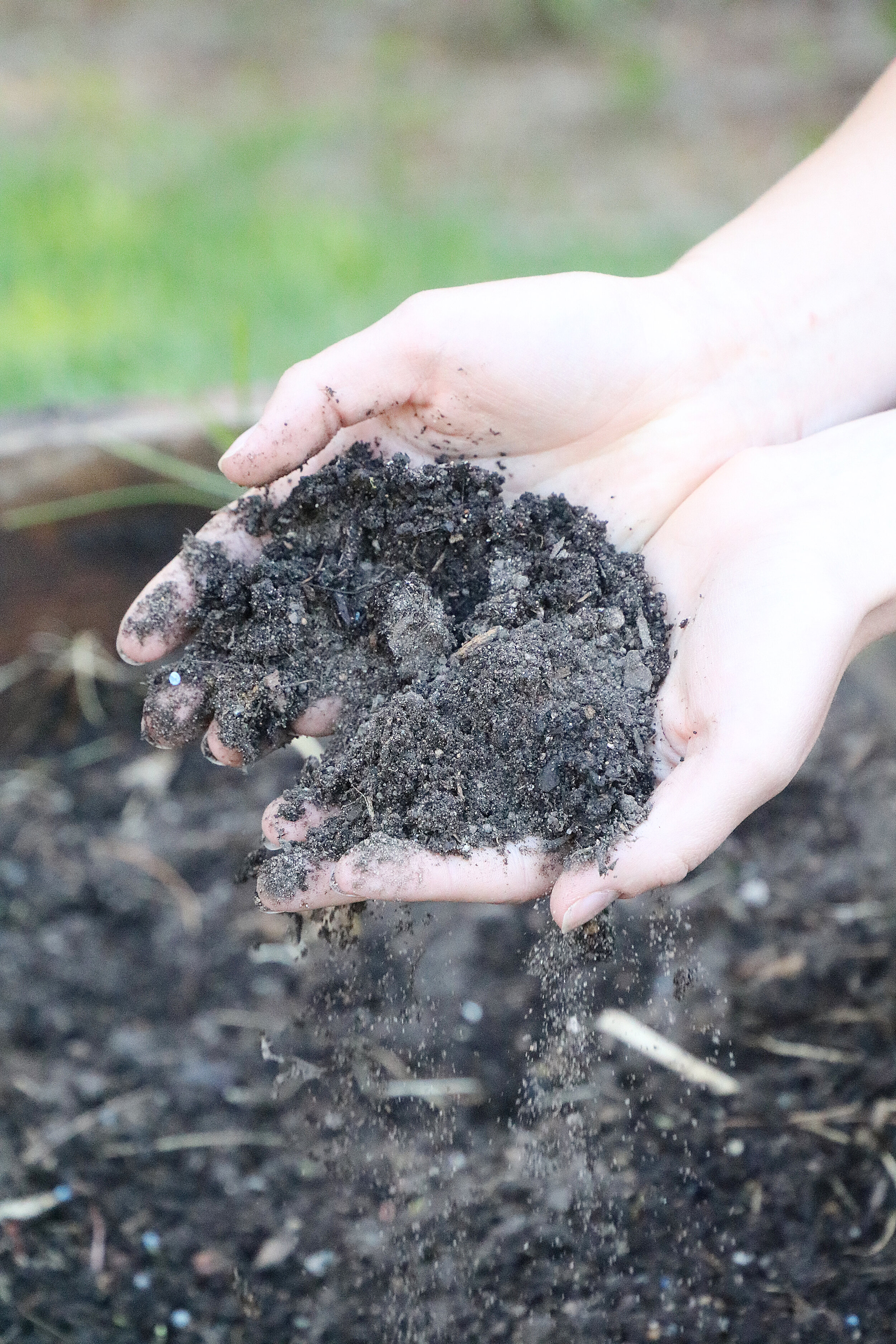Gardening with Clay Soil
/Soil amended with nutrient-rich compost.
Soil is a dynamic and complex system that provides important ecosystem services and functions. Soil supports the growth of plants and acts as a habitat for microbes and microorganisms. It is a critical component of Earth's hydrological and nutrient systems. Soil aids in the decomposition of organic matter and also acts as a detoxicant and a filtration system. Climate, biotic factors, topography, parent material, physical and chemical weathering, and time contribute to the dynamic nature of soil. Soil is a marvel, one we at Heritage Farm get the opportunity to contend with each time we step into our gardens at Seed Savers Exchange headquarters just as you do when you tend your own garden..
Soil is made up of minerals, gas, pore space, water, microbes, microorganisms, and soil organic matter. Approximately 40-50 percent of soil is composed of minerals; air and water each make up 20-30 percent, while organic matter makes up the remaining five percent. The varying ratio of mineral components impacts how we experience soil. Soil texture is, in layman’s terms, the way soil feels to the touch; what we experience as texture is the proportion of sand, silt, and clay to one another. Sand is the largest of the three particles,followed by silt and clay. We describe soil texture using phrases such as loamy, sandy, and clay. Soil texture is an important indicator of how much water can be held, the rate of water filtration, and how easily soil can be worked.
Soil structure is defined by soil aggregation, or how individual particles are structured in mass and the amount of relative pore space. Structure can impact the flow of water and air through the soil; it depends on root activity, macrofauna, organic material content, calcium levels, climate, and fungal hyphae. Clay soils take longer for water or air to permeate or infiltrate because although they have more total pore space (due to their small size), that pore space is in smaller pockets which in turn slows down water and air infiltration. Due to the structure of clay soil, we may often experience water logging, poor root penetration, and compaction, and thus have a hard time working the soil within our gardens. Although the nature of a soil type cannot be changed, with patience and effort the workability of soil can be improved. And that can lead us to happier gardening! Let's get started exploring how we can improve our soil quality!
Add organic matter
While it is impossible to alter the texture of a soil, you can increase the soil organic matter, which in turn will change the structure of soil. In gardening, having soil organic matter make up 4-6 percent of your soil profile is a great goal to strive for; this can be achieved by incorporating compost, green manure, animal manure, and leaf litter.
Mulch
Mulch provides a number of vital services, including maintaining soil temperatures, reducing soil compaction, increasing organic matter, conserving water, and reducing weed pressure. Using mulch helps to maintain the soil structure and supports a diverse ecosystem for micro and macro organisms through the breakdown of mulch over time and the creation of habitat for these organisms. Common mulch materials are bark, straw, compost, grass clippings, leaves, pine needles, or wood chips.
Cover crop
Implementing cover cropping into your garden system can improve soil structure, increase organic matter, increase soil aeration, and aid in nutrient cycling. This is especially true if you are experiencing compact clay soils. Planting a cover crop is an effective way to reduce soil erosion by having plants “hold” soil in place via root structure and by holding moisture and slowing water filtration through the soil profile. After the cover cropping cycle is complete, a cover crop can act as a form of green manure when the cover crop is turned over and incorporated into the soil. A cover crop is often used as a catch crop; the cover crop catches nutrients after the cash crop and prevents nutrient leaching. Common cover crops are rye grass, cereal rye, triticale, sorghum, sudan grass, subclover, vetch, cereals, and legumes.
Select plants that prefer a more clay-like soil!
Why fight your soil? Instead, select plants that have a better chance of thriving within clay soil. Great vegetables that don't mind having excess moisture include broccoli, cabbage, cauliflower, beans, and peas. Flowers that do well in clay soils include Aster, Purple Coneflower, Geranium, Heliopsis, Sage, Black-eyed Susan, and Skullcap. Peruse our catalog to find varieties that might work in your garden!
References
Falih K. Aljibury. Managing Clay Soils in the Home Garden. Vegetable Research and Information Center, University of California, Davis.
Linda Chalker-Scott, Ph.D. (2015)The Myth of Soil Amendments Part II
Puyallup Research and Extension Center, Washington State University.
Soil and Water Conservation Society (2000) Soil Biology Primer. Ankeny, IA
Gershuny, G. (1993). Start with Soil. Emmaus, PA: Rodale Press
Brady, N. C., & Weil, R. R. (2002). The nature and properties of soils. Upper Saddle River, N.J: Prentice Hall.
Center for Agroecology and Sustainable Food Systems. (2015). Teaching Organic Gardening. Santa Cruz, CA: University of California, Santa Cruz














